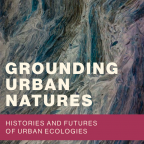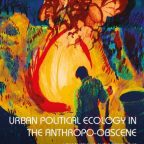SITUATED ECOLOGIES gathers art, design and research collaborations to contest and democratise ecologies.
Latest News
News Categories
- Conferences (8)
- GROWL Project (1)
- Learning resources (7)
- MAIN NEWS (130)
- Announcements (50)
- Conferences (7)
- Deliverables (27)
- Exchange (1)
- NEWS: Anthro-Obscene UPE+20 (7)
- NEWS: General (56)
- NEWS: Grounding Urban Natures Book Project (7)
- NEWS: MOVE Project (13)
- NEWS: PhD Courses (6)
- NEWS: Ways of Knowing Urban Ecologies (30)
- Presentations (7)
- Publications (13)
- Relevant books (6)
- Teaching (13)
- SUPE Feed (90)
- HICCUP (3)
- SUPE Announcement (22)
- SUPE Commentary (32)
- SUPE Course (2)
- SUPE Learning (12)
- SUPE News (38)
- SUPE Research Exchange (5)
- SUPE Workshop (3)
- TLR Waste Politics (2)
- uncategorized (8)
- Video (3)
- Visual Environmental Humanities (8)



In this commentary Sophie Schramm explains her new research with Jochen Monstadt on the infrastructural ideal in African cities
Translating urban infrastructure ideals and planning models: adaptation and creativity in water and sanitation systems in African cities.
The research project is part of a wider programme that focuses on the transfer and thereby translation of internationally circulating ideals, theories and technologies. Our project focuses on the translation and creative adaptation of circulating urban and infrastructure ideals and models in the African cities Dar es Salaam (Tanzania), Accra (Ghana) and Nairobi (Kenya) and the way they shape the respective water and sanitation infrastructure regimes. Currently, our work concentrates on the in-depth case study Dar es Salaam and will later focus on the reference cities Nairobi and Accra.
In Dar es Salaam, the economic downturn since the 1970s became manifest in the provision of urban services and the condition of urban infrastructure artifacts and networks. Nowadays urban growth is coupled with economic growth while the provision of basic services remains instable, fragmented and contested within the urban realm. This situation is not in accord with the modern ideal of the “networked city”, which assumes that urban sociotechnical water and sanitation systems are to provide reliable, ubiquitous, affordable, uniform and secure access to the vital resource water to all citizens in urban space. Still, urban infrastructure plans and policies reflect this ideal until today. At the same time, the concept of “appropriate technology” is part of the discourse on the improvement of water and sanitation systems in the city. For example, international NGOs promote a shift of investments from large networked systems towards decentralized ‘on-site’ components.
During our stay in Dar es Salaam from mid-November on we will explore current interventions in the water and sanitation systems of the city and the way they reflect the translation and adaptation of the infrastructure planning ideals of “the networked city” and “appropriate technology”. By discussing projects and the way they reflect the ideal of the “networked city” and/or are framed as “appropriate technology” we want to find out how actors interpret these ideals, how they are operationalized and how they are contested, i.e. who pursues them against which opposition.